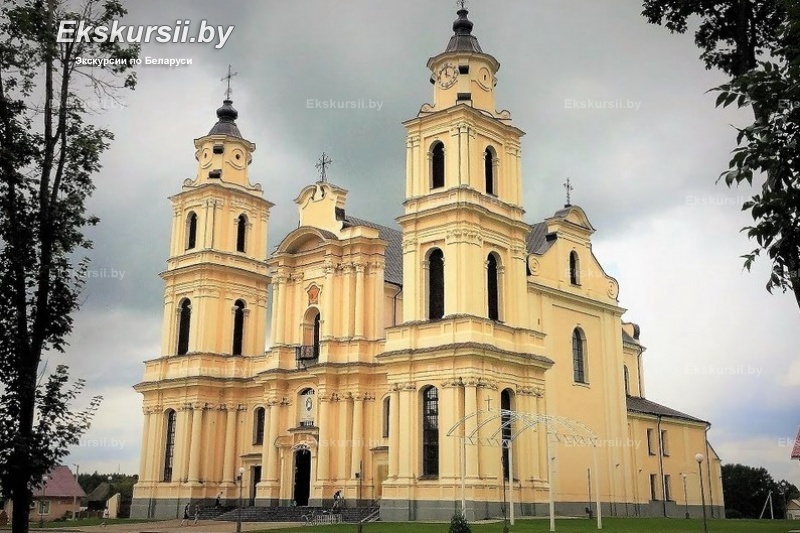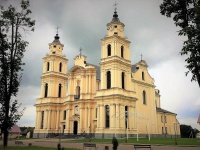History of the development
The first written mention of Budslav dates back to 1504, when Grand Duke Alexander presented this area to Vilnius Bernardine monks. In 1589 they built a wooden church, which was consecrated in 1591. Voivode of Minsk, Jan Paz, donated to the Bernardinians the icon of the Mother of God, presented by Pope Clement VIII to him. On August 28, 1633 the first stone of the stone church was laid. On October 6, 1732, the King and Grand Prince Augustus the Strong gave Budslav a town status. July 29, 1767 in the town was laid the first stone of the new stone basilica, the solemn consecration of which took place on September 7, 1783.
As a result of the second partition of the Polish-Lithuanian Commonwealth in 1793, Budslav was a part of the Russian Empire. After the suppression of the national liberation uprising, the Russian authorities closed the Bernardine monastery. The impetus to the development of Budslav was the laying of the railway line between Polotsk and Molodechno in 1907 and the opening of the station of the same name 2 km from the village.
During First World War in Budslav there was the headquarters of the 2nd Russian Army of the Western Front, which implemented the main tasks during the Naroch operation in 1916. According to the Riga Peace Treaty of 1921. Budslav was in the interwar Polish Republic. In 1939, Budslav entered the BSSR. On July 2, 1992, the first restored pilgrimage to the icon of the Mother of God of Budslav was held. On July 2, 1996, Archbishop Dominic Grushovsky handed over the papal bull, in which the Mother of God of Budslav was proclaimed patron of the Minsk-Mogilev Archdiocese, i.e. Of Belarus. In 1998, Cardinal Casimir Swyentek crowned the miraculous icon of the Mother of God of Budslav papal crowns.
Tourism potential
The main attraction of the agro-town is Budslau Church of the Assumption of the Most Holy Virgin Mary, which houses the miraculous icon of the Mother of God of Budslav.
Also in Budslav there is a the house where Pavlina Myadek was born, which entered history as the first performer of the role of Pavlinka in the eponymous comedy by Yanka Kupala.




